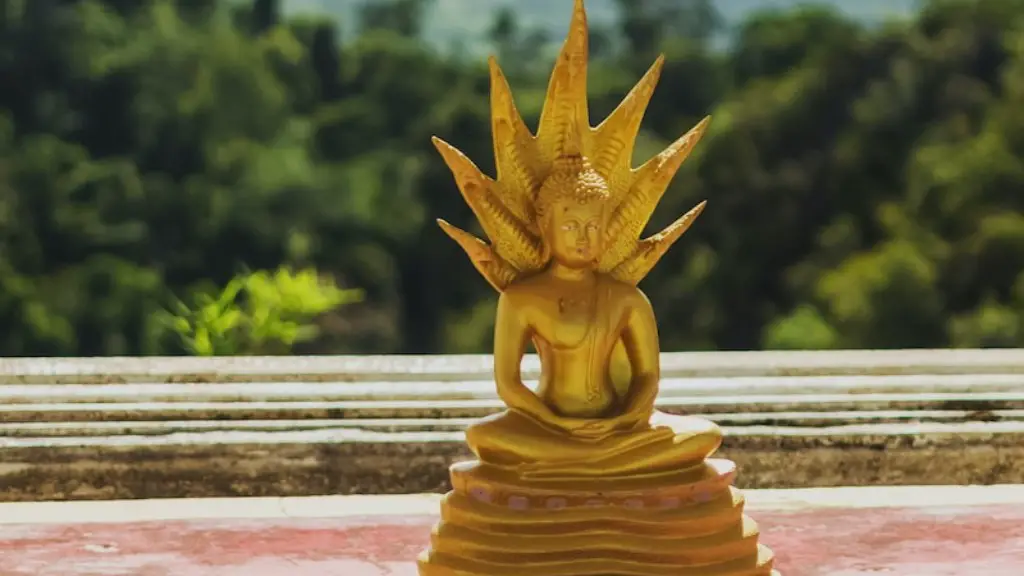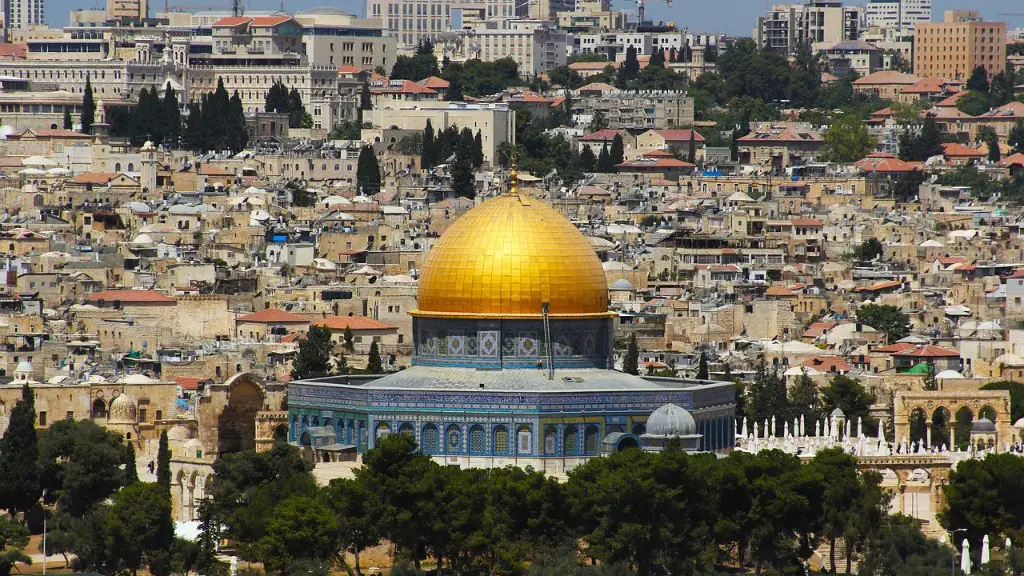Buddhism is a religion that was founded by Siddhartha Gautama in the 5th century BCE. Gautama was born into a wealthy family in present-day Nepal, and he lived a life of luxury until he was 29 years old. One day, Gautama came across a sick person, a beggar, and a corpse. These sights made him realize that life is suffering, and he decided to leave his comfortable life to find a way to end suffering. Gautama spent the next six years meditating and studying different philosophies, but he was not satisfied. After 49 days of meditation, Gautama attained enlightenment and became the Buddha, which means “awakened one.” The Buddha then spent the rest of his life teaching others about his findings.
Buddhism is based on the Four Noble Truths, which state that life is suffering, suffering is caused by attachment, suffering can be ended by letting go of attachment, and there is a path to liberation from suffering. This path is known as the Eightfold Path, and it includes right understanding, right thinking, right speech, right action, right livelihood, right effort, right mindfulness, and right concentration.
The symbol of Buddhism is the Dharma Wheel
The traditional symbol of Buddhism is a wheel with eight spokes. Each spoke represents a different aspect of the Buddha’s teachings.
What are the 3 main symbols of Buddhism?
Buddhism is a religion and philosophy based on the teachings of Siddhartha Gautama, who is commonly known as the Buddha. Buddhism teaches that all beings have Buddha nature and that it is possible to achieve liberation from suffering. The basic tenets of Buddhism can be summarised as follows:
-The Four Noble Truths: suffering exists; suffering has a cause; suffering can be ended; and there is a path to the end of suffering.
-The Eightfold Path: the way to end suffering, comprising right understanding, right thought, right speech, right action, right livelihood, right effort, right mindfulness, and right concentration.
-The Three Jewels: the Buddha, the Dharma (the teachings of the Buddha), and the Sangha (the community of monks and nuns).
-The Five Precepts: to refrain from harming living beings, to refrain from taking what is not given, to refrain from sexual misconduct, to refrain from false speech, and to refrain from taking intoxicants.
The Wheel of the Law (dharmachakra) is one of the most important symbols of Buddhism. It represents the Buddha’s First Sermon in the forest at Sarnath, where he set Buddhist Law (dharma) in motion. The Wheel of the Law is a powerful symbol of the Buddha’s teachings and the path to enlightenment.
What does the Buddhist logo mean
The symbols of Buddhism represent some of the most important aspects of the religion. They are often used as decorations or talismans, and can be found in many different forms. The most common symbols are the Buddha himself, the Dharma wheel, and the 8-spoked auspicious wheel. Other popular symbols include the lotus flower, the swastika, and the OM mani padme hum mantra.
The equilateral cross with its legs bent at right angles is a millennia-old sacred symbol in Hinduism, Buddhism and Jainism that represents peace and good fortune. Indigenous people worldwide used it similarly.
What are the 8 symbols of Buddhism?
The Wheel of Law: The Wheel of Law is a symbol of the Buddha’s teachings. It represents the cycle of birth and death, and the fact that the Buddha’s teachings can lead to liberation from this cycle.
Conch Shell: The conch shell is a symbol of the Buddha’s teachings on emptiness. It represents the fact that all things are empty of inherent existence.
Victory Banner: The victory banner is a symbol of the Buddha’s victory over the forces of ignorance and hatred. It represents the fact that the Buddha’s teachings can lead to the triumph of good over evil.
Umbrella: The umbrella is a symbol of the Buddha’s compassion. It represents the fact that the Buddha’s teachings can provide protection from the suffering of birth and death.
Lotus Flower: The lotus flower is a symbol of the Buddha’s teachings on the path to enlightenment. It represents the fact that the Buddha’s teachings can lead to the blossoming of the mind.
Vase: The vase is a symbol of the Buddha’s teachings on the interdependence of all things. It represents the fact that the Buddha’s teachings can lead to the harmonious functioning of all things.
Pair of Fish: The
The lotus is one of Buddhism’s most recognizable symbols of enlightenment and is important in many Buddhist traditions. According to legend, everywhere the baby Buddha stepped, a lotus flower bloomed. The lotus is also a symbol of purity and detachment, as it grows in mud but blossoms clean and unsullied. In Buddhist art and sculpture, the lotus is often shown as a seat or throne for the Buddha or other important figures.
Is a Buddhist a religious symbol?
As a Buddhist, it is important to be aware of the religious symbolism and meaning behind the objects in your home. Buddhist symbols can be used to promote positive energy and to remind you of your spiritual practice. By having a few simple Buddhist symbols in your home, you can create a peaceful and supportive environment for yourself and your family.
The eight auspicious signs, also known as the Ashtamangala, are a set of symbols that represent the Buddhist ideals of luck, prosperity, and good fortune. The symbols are the umbrella, yellow fish, vase, lotus, white conch shell, glorious peu, banner, and Dharma chakra. These symbols are often seen in Buddhist art, architecture, and literature, and can be used as a way to connect with the Buddha and the teachings of the Dharma.
Is it okay to get a Buddhist tattoo
While there is nothing wrong with getting a Buddha tattoo, it is important to be respectful of how it is displayed in public. Remember that Buddha is a deity and should not be reduced to simply being a decoration. Additionally, some people may be offended by seeing a tattoo of Buddha, so it is best to keep it hidden in public to avoid any potential problems.
Buddhism is a very flexible religion that allows for a wide range of interpretations and approaches. As long as your motivation is sincere and serves to benefit others, you will be welcomed into the religion regardless of your specific purpose. There are many symbols and practices within Buddhism, so you are sure to find something that resonates with you. Keep an open mind and explore the religion – you may be surprised at what you find!
Is there a Buddhist Emoji?
The ☸️ Wheel of Dharma Emoji is a religious symbol that represents the Buddha’s teachings. The emoji is often used in religious and spiritual texts, as well as in popular culture to represent the Buddhist faith.
The original Hindu Brahma is said to have four faces, each facing a different direction. Similarly, the Buddha at Erawan Shrine has four faces, each with its own meaning. The front face represents career and life, the second face is symbolic of relationship and family, the third is for wealth, and the last for wisdom and health. Worshippers often seek the Buddha’s guidance on all aspects of their lives, and so the four faces represent the all-encompassing nature of the Buddha’s wisdom.
What is the symbol of Jesus
The cross is the most important symbol of Christianity, as it represents the crucifixion of Jesus Christ. The cross is also a sign of the faith of Christians, as it shows that they believe in the redeeming power of Christ’s Passion and death.
The precepts are not a set of commandments that must be obeyed, but rather a set of guidelines that Buddhists can use to help them live their lives in a way that will promote their own spiritual development. The precepts are not meant to be followed blindly, but rather to be used as a tool to help individuals examine their own behavior and see how it affects their own spiritual growth.
What animal symbolizes Buddhism?
The lion is used as a direct symbol of Buddha in some forms of Buddhism. Lions are seen as proud and regal animals, and are often used as symbols of strength, courage, and bravery. The riderless horse is also a significant symbol in Buddhism, often representing qualities like liberation, mental strength, and energy.
The color of a lotus flower is often associated with its meaning. Pink lotus flowers are known as Buddha’s earthly symbol, where a bud symbolizes one’s spiritual journey and a fully-bloomed pink lotus represents enlightenment. Yellow lotus flowers symbolize openness and hospitality while red flowers have come to meant selfless love and compassion.
What do Buddha colors mean
Blue is the color of loving kindness and peace in Buddhism.Yellow signifies the Middle Path, or the complete absence of form and emptiness. Red symbolizes achievement, wisdom, virtue, fortune, and dignity. White stands for purity and emancipation.
There is no one path to enlightenment, and Siddhartha Gautama is just one example of someone who reached this state. Buddhists do not believe in any kind of deity or god, although there are supernatural figures who can help or hinder people on the path towards enlightenment. Siddhartha Gautama was the first person to reach this state of enlightenment and is still known as the Buddha today.
Conclusion
There is no one symbol that represents Buddhism. Instead, there are a variety of different symbols that are associated with the religion. These include the Dharma Wheel, the Lotus Flower, and the Buddha himself. Each of these symbols represents different aspects of the Buddhist faith and can be used to help explain the religion to others.
The symbol of Buddhism is a very important part of the religion. It is a representation of the Buddha and his teachings. The symbol is a reminder to followers of the Buddha’s path to enlightenment.


